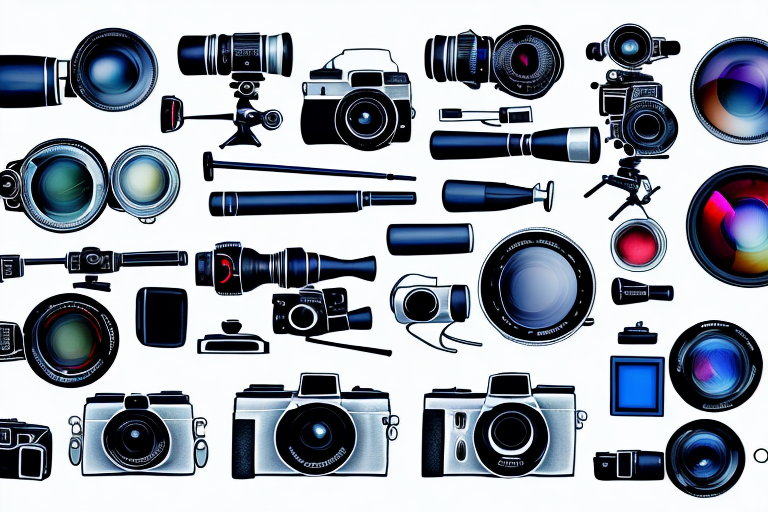Photography is a captivating art that allows us to capture and preserve moments, emotions, and memories. To create stunning photographs, it is essential to have the right photography equipment. In this comprehensive guide, we will explore the different categories of photography equipment, understand their importance, and provide recommendations to help you make informed decisions when choosing your gear.
A Comprehensive Guide to Photography Equipment Categories
Photography equipment can be broadly categorized into various groups, each serving a specific purpose in capturing and enhancing images. Let’s delve into these categories and understand what each one entails.
One of the most essential categories of photography equipment is the camera itself. Cameras come in various types, including DSLR (Digital Single-Lens Reflex), mirrorless, and point-and-shoot. DSLR cameras are popular among professional photographers due to their versatility and ability to interchange lenses. Mirrorless cameras, on the other hand, are known for their compact size and advanced autofocus capabilities. Point-and-shoot cameras are compact and easy to use, making them a popular choice for casual photographers.
In addition to cameras, lenses are another crucial category of photography equipment. Lenses come in different focal lengths, which determine the angle of view and magnification of the captured image. Wide-angle lenses are ideal for landscape and architectural photography, while telephoto lenses are used for capturing distant subjects such as wildlife or sports events. Prime lenses have a fixed focal length and are known for their sharpness and wide aperture, making them suitable for low-light conditions and portrait photography.
Exploring the Different Types of Photography Equipment
When starting your photography journey, it’s important to familiarize yourself with the different types of equipment available. Understanding their functionalities and how they contribute to the image-making process will help you make informed choices that align with your interests and goals as a photographer.
1. Cameras: The camera is the primary tool for photography. It comes in different types, including DSLRs, mirrorless cameras, and point-and-shoot cameras. Each type offers unique features, capabilities, and levels of control, catering to various skill levels and requirements.
2. Lenses: Lenses play a vital role in capturing sharp, detailed, and visually stunning photographs. They come in a wide range of focal lengths, allowing photographers to achieve different perspectives, from wide-angle to telephoto. Understanding lens specifications and their impact on image quality will enable you to select the perfect lens for your needs.
3. Lighting Equipment: Proper lighting is crucial for creating well-exposed and captivating photographs. Lighting equipment like external flashes, continuous LED lights, and studio strobes help provide the right amount and quality of light, allowing photographers to control shadows, highlights, and overall mood in their images.
4. Tripods and Supports: Stability plays a key role when capturing sharp and clear photographs. Tripods, monopods, and other supports help eliminate camera shake caused by hand-holding, allowing for longer exposures and precise framing, especially in low-light situations.
5. Camera Bags and Cases: Protecting your photography equipment is essential, especially when traveling or working in challenging environments. Camera bags and cases offer organization, comfort, and security for your gear, ensuring it remains safe from dust, moisture, and accidental damage.
6. Filters: Filters are accessories that attach to the front of camera lenses to modify and enhance the image. They can be used to reduce glare, enhance colors, create artistic effects, or even protect the lens from scratches and smudges.
7. Memory Cards: Memory cards are where your photographs are stored. Investing in high-capacity, reliable memory cards ensures that you have sufficient storage space and that your files are safely saved, preventing data loss and corruption.
8. Editing Software: After capturing your photographs, editing software is essential for post-processing and enhancing your images. Programs like Adobe Photoshop and Lightroom offer a wide range of tools and features to adjust exposure, color balance, sharpness, and other aspects of your photos. Learning how to use editing software can greatly enhance the final result of your images.









